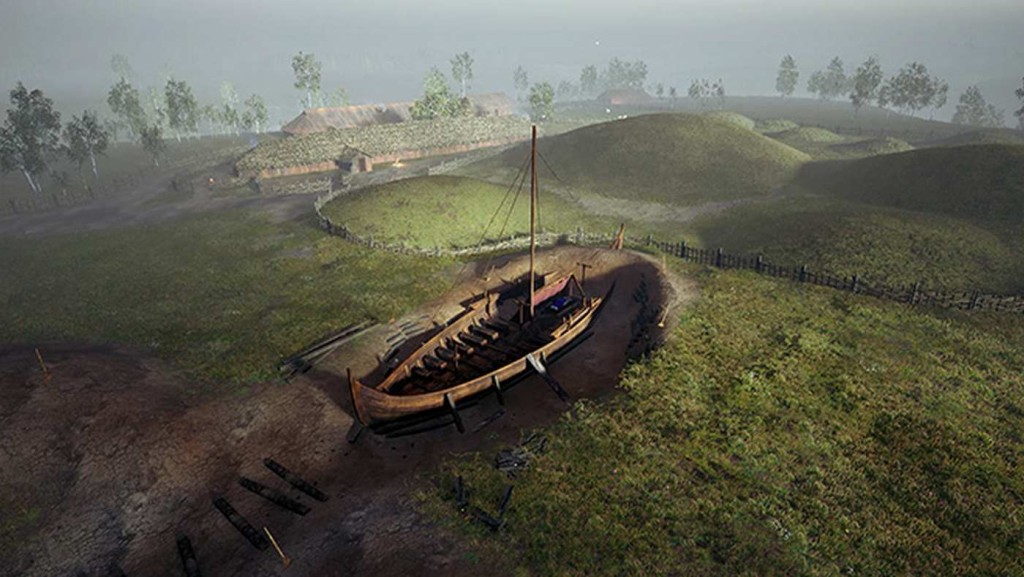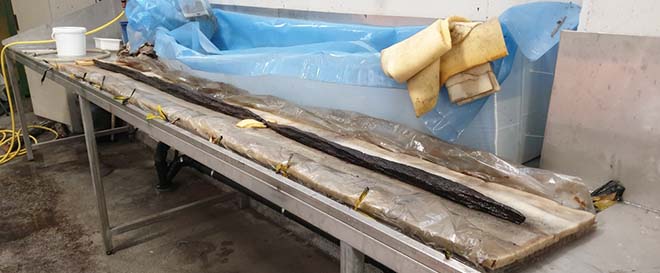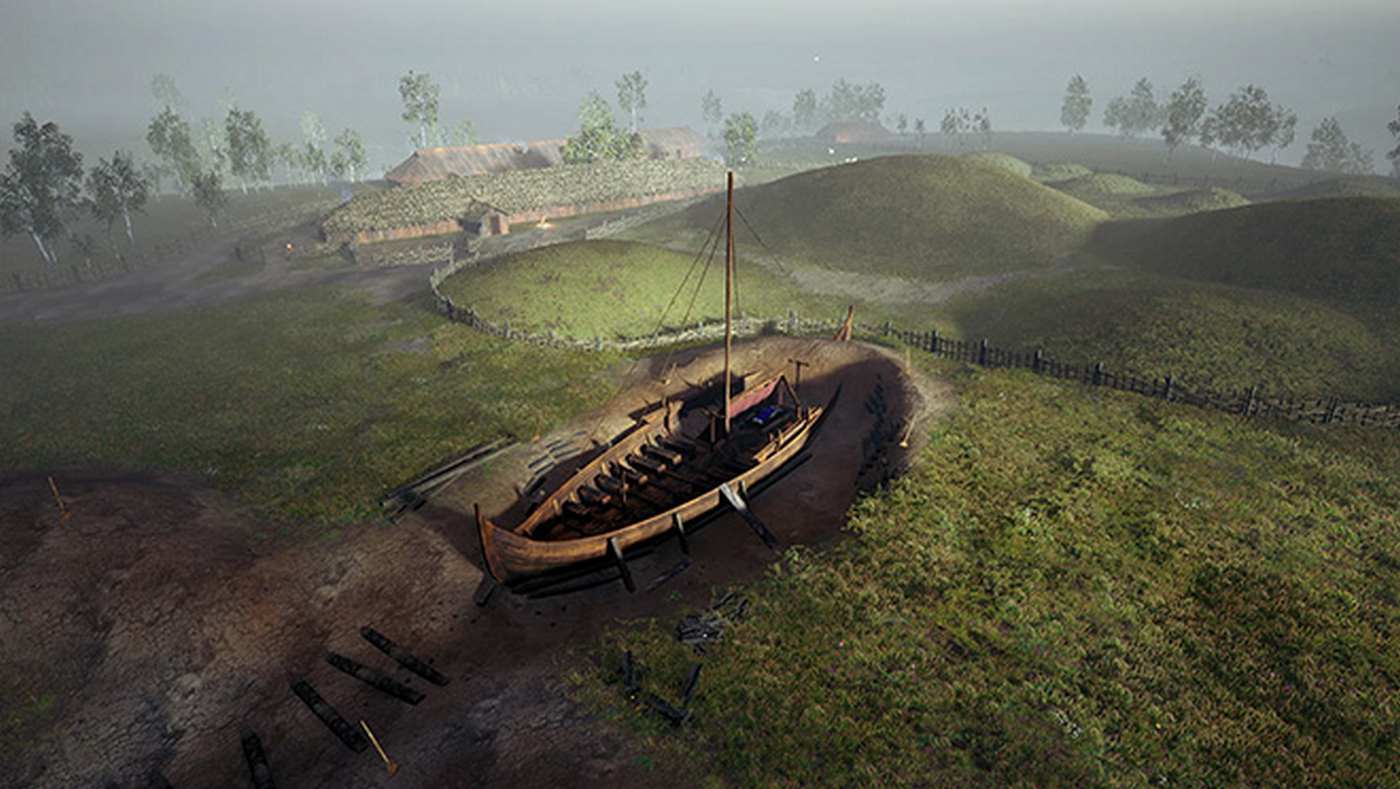
Reprinted with permission from World at Large, an independent news outlet covering conflict, travel, science, conservation, and health and fitness.
When news broke in 2018 that another Viking-Age ship burial had been found on the shores of the Oslo Fjord, it quickly became one of the finds of the century.
Compared to its truly legendary predecessors of the Gokstad and Oseburg ships, the newly-found Gjellestad ship is not going to be mounted in a museum any time soon; most of the woods has disintegrated.
That hasn’t stopped Norwegian archaeologists from figuring out a lot about what was going on from the time of the burial and the ship.
Excavations began in 2020 and concluded in October of 2021. Early on it was clear that nothing like a ship could be removed from the earth, not only for the condition of the wood, but also the rivets. More than 1,300 of them lined the clinker-built hull, but the iron flaked away at the slightest disturbance, requiring the excavators to remove them in blocks of dirt for CT scans.
However, at the bottom of a central trench, the team found the ship’s keel, which is the beam of wood that sits underwater along the central spine of the ship. Viking Age boats are famous for having a shallow draft, in part because of their small keels. This allowed them not only to go to sea, but sail up shallow rivers as well.
Tree-ring analysis and carbon dating showed the wood for the keel was felled in the 700s, meaning the ship probably saw action between the late 8th century to the 10th century—primetime for Vikings in that part of the world.
The keel was removed and preserved by immersing it in a water-soluble wax called polyethylene glycol which impregnates archaeological wood samples found underwater or in sodden soil. Gradually the wax takes the place of the water molecules, and after the wood is dried out, the wax forms a reinforcing part of the structure.
Rivets on the ship were stored in 8 x 12 cm blocks of dirt in plastic bags to prevent oxidation. They represent the most important piece of data for what the researchers hope to do which is to digitally reconstruct the ship.
The rivets could contain vital clues just as wood residue and other evidence of how it was built and with what materials.

Journey to the east
The Gjellestad ship will tell the story of the eastern shore of the massive Oslo Fjord. The great Gokstad and Oseburg ship burials, filled as they were with treasure, weapons, sacrifices, and of course, complete Viking boats, represented that the western shore—an area called Vestfold, was a flourishing power center even as early as 700 CE
By contrast, less is known about the elite class in Østfold, in the area called Viken today, where the Gjellestad ship was found. Historians however have dated settlements in the area to an earlier period compared to the Vestfold.
Nearby lies Norway’s second-largest burial mound, the Jellehaugen, which was erected in 500 CE, but there had been settlements there 2,000 years before.
MORE FROM NORWAY: Norway Closes Down Its Last Arctic Coal Mine and Transforms Land into Giant National Park
“The area was thus a well-established burial ground when the Gjellestad ship and the person, or persons on board, were buried here,” writes Mari Wammer at the Museum of the Viking Age, Univ. of Oslo. “It has probably been a sacred place, which has evolved from a classic Iron Age society with settlement and burial mounds side by side, to becoming a burial ground only.”
As yet, no one has been found inside the Gjellestad ship burial, though archaeologists believe that there’s no question either someone is still inside waiting to be discovered, or someone had been there but was moved.
The latter is likely the truth, because in a summary of their findings reported on by National Geographic, the archaeologists determined through soil samples that tomb robbers entered the mound around the year 950 CE by tunneling underneath the soil and cutting a hole through the hull to get at the loot inside, where they also may have exposed the remains of whoever was buried inside to oxygen.
OTHER ARCHAEOLOGICAL TRIUMPHS: 2,000-Year-Old Roman Road Uncovered in British Field is Like No Other–And of ‘Global Importance’
Ship burials were the ultimate expression of power, and the ceremony of internment would have gone on for days and involved for days, while the grave itself continued as a center of communion with the dead. It’s a sign that the Østfold Norwegians possessed similar wealth and population density to those of the Vestfold.
“This is the first half of the Viking Age, and it indicates concurrency with the other major ship finds we know in Norway. The ship fits into a context we already know, while at the same time it is a new ship that will further complement the story,” said Christian Løchsen Rødsrud, who was project manager during the excavations last fall.
MORE VIKING NEWS: Viking Age Shipyard Uncovered at Birka is Like Nothing Ever Found Before
After the excavations were concluded, the team took all the appropriate measures to preserve the imprint of the 60-foot-long ship at the bottom of the burial by re-burying it in the hope that soon the county will have the money to construct a visitor center over the pit.
Meanwhile “Viking Nativity” a big organized survey and metal detecting project, is scouring all the nearby areas for other gravesites, building remains, or artifacts to help flush out the picture of Viking Age Viken.
Take an interactive journey through the history of the ship and its story at Gjellestad Story.no — a must for Viking enthusiasts.
Everyone Likes Vikings, SHARE The Summary Of This Incredible Discovery…




















